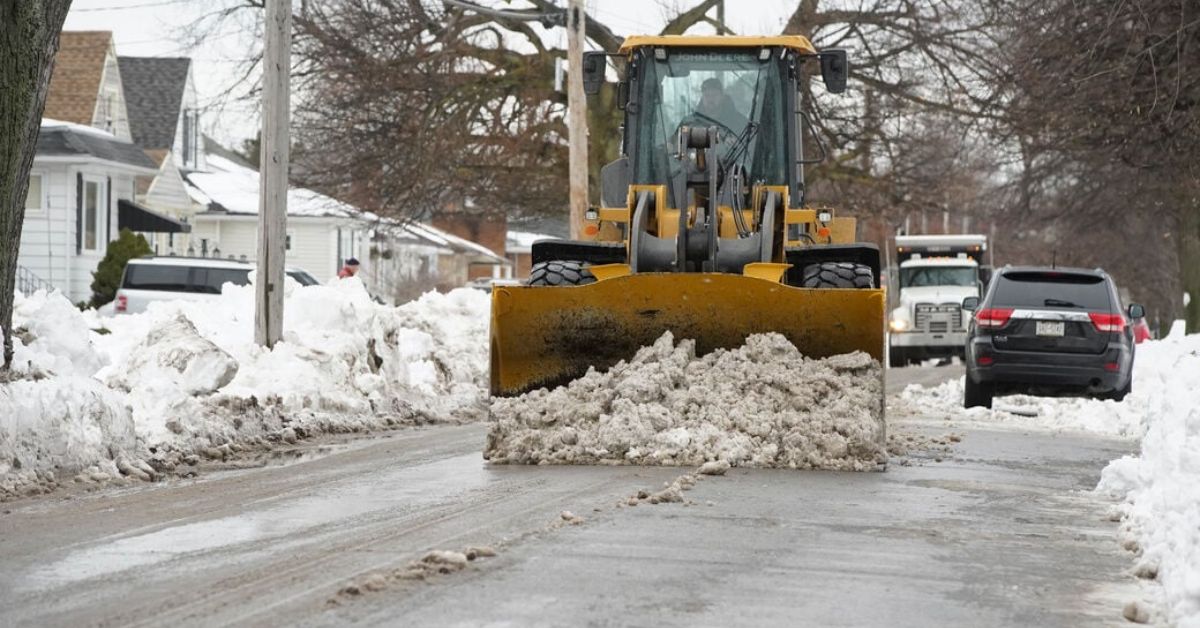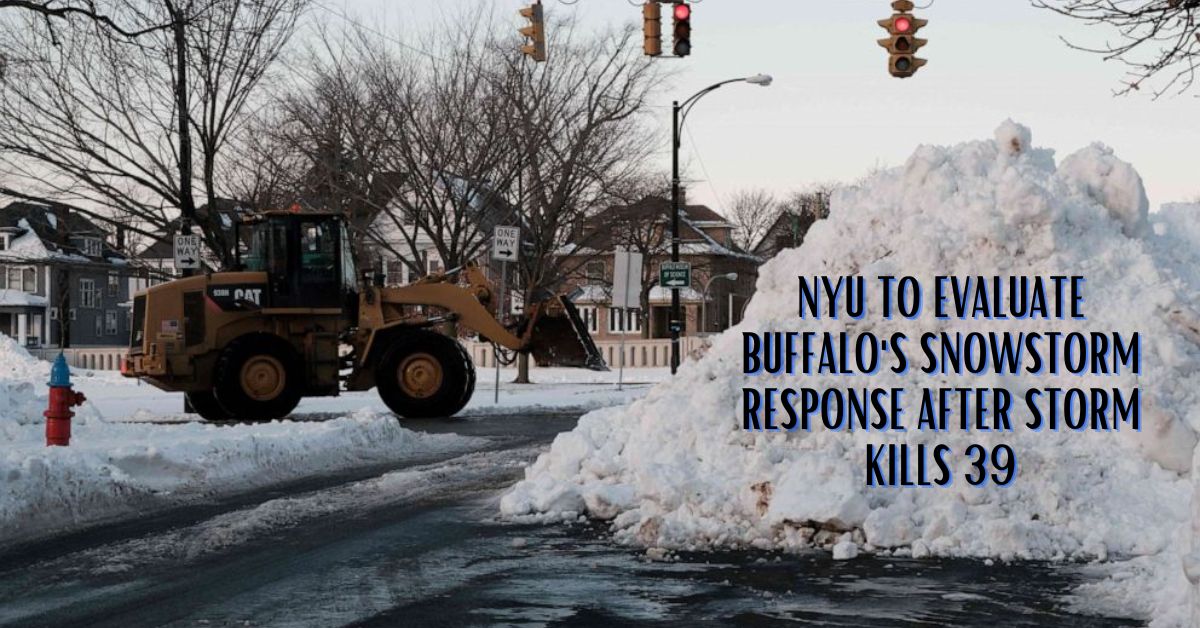After a snowstorm killed 39 people across Erie County in New York, Buffalo Mayor Bryon Brown stated that New York University will produce an “after-action study” on the region’s reaction to the disaster. Brown claims that New York University’s Robert F. Wagner Graduate School of Public Service will analyze Buffalo’s storm planning, response, and cleanup in order to provide useful input for other big cities.
“The City of Buffalo is resolved to learn from this storm and make additional improvements in how we respond to future extreme winter snow storms,” Brown wrote in a statement. At least 39 people were killed by the snowfall, which also caused widespread power outages and forced many to stay indoors for over a week.
At a news conference on December 24, Erie County Executive Mark C. Poloncarz remarked,“There is no guarantee that in a life threatening emergency situation that they’re going to be able to respond immediately.” He also claimed that the worst hit neighborhoods will have no emergency services at all.

Two-thirds of emergency vehicles were unable to move due to the snow during the news briefing. Many Buffalonians were left to fend for themselves when the New York National Guard, including military police, arrived to aid in recovery operations. Tayron Knight, a Buffalo native, remarked, “Nobody would come” when asked about his ordeal on Niagara Falls Boulevard. I contacted the police many times, and each time they told me they couldn’t help because they were too busy.
Eddie Porter, another local, described his 28-hour ordeal of being stranded on the highway due to the storm. He said that cops ignored his calls. He said he contacted the police on December 23 and didn’t get a response until December 29. I really believed it was over the way it was supposed to be; have you ever had the terrifying realization that you’re about to die and there’s nothing you can do to prevent it? Porter asked tearfully in an ABC News interview.
William Kless, a local homeowner, spent days on his snowmobile rescuing an estimated fifty people, including Porter, who the police ultimately decided not to rescue. “If he hadn’t been there, I don’t know what I was gonna do,” Porter said. Kless told ABC News that after 17 hours of being stranded in his car, he ended up helping neighbors get to shelters, carrying animals, hauling supplies, and even bringing a guy to vital dialysis treatments.
You can check out Our Previous Article-
- Storm Subtropical Nicole Issues A Hurricane Warning For Florida East Coast
- Chicago Weather Alert: Light Night After Severe Storm in Chicago Area
Kless claimed that he found out about the community’s needs by going door to door and talking to people, using social media, and contacting the police. “There were so many calls that emergency services were canceled, you know, there’s so many people left helpless, not realizing when they’re going to be able to get help,” Kless said. Kless also mentioned that he coordinated with Buffalo police when they were unable to reach a site in a vehicle.
“It was just like a search and rescue,” he said. “The Buffalo police were involved because they couldn’t get down on the streets.” As Poloncarz noted at a news conference on December 24th, the shortage of snowmobiles and the resulting reliance on conventional emergency response vehicles and National Guard Humvees made it difficult for the county, city, and state to respond effectively.
It’s so strange that we have a winter storm in America that kills that many people yet it’s not front page news. It’s been talked about but no where near if say over 60 people died in a hurricane. Especially when 39 die in Erie county alone.
— Eric Pistey (@shawnpisteySC) December 31, 2022
After Knight was saved by a buddy, he started helping other people in need of rescue when no authorities were around. “We started going around helping everybody in the city of Buffalo, as many people as we can,” Knight said. “We had put up our numbers, so if anybody that was trapped, or had no power, or in desperate need of emergency, [if] they needed any help that wasn’t getting any help from the city of Buffalo, they could give us a call.”
Knight estimated that they got hundreds of calls, forcing them to prioritize how they responded. Kless, Knight, and Porter all pointed out problems with the city’s reaction after reflecting on their own storm experiences. “We didn’t see any paramedics, any police, any firemen, any emergency response teams at all,” Kless said. “It was literally they didn’t come out till about the day after once the storm and everything calmed down.”
When asked about his feelings on the city of Buffalo’s reaction to the storm, Porter said he was “frustrated” by the city’s “dropping the ball” on the east side, a predominantly African American region where casualties were high. “Let’s be clear — that was one of the reasons it was so tragic,” Porter said. Knight stated his belief that Buffalo should have been better prepared and that the city could have saved lives if it had been more organized.
“They were warned and knew how catastrophic the storm was going to be,” he claimed, implying that the people involved were aware of the impending disaster for several days. They should have been prepared with the proper staff. Poloncarz had first publicly shamed Buffalo for its “embarrassing” reaction, later retracting his comments.
“Storm after storm after storm after storm, the city unfortunately is the last one to be open. And that shouldn’t be the case,” he said. “It’s embarrassing to tell the truth.” He also mentioned that a third of the city’s functions were transferred to Erie County.
You can check out Our Previous Article-
- Winter Storm Kills 27 in Buffalo, New York, Authorities Worry It Could Grow
- NASA’s Artemis I Mission Delayed Again as Storm Approaches Launch Location
There was an extraordinary number of fatalities, and residents stated they feel sadness over what may have been prevented. “Most of this could have been prevented as far as fatalities,” Knight said.
Last Lines
Buffalo Mayor Bryon Brown said that New York University will conduct an “after-action study” on the region’s response to the crisis after a snowfall killed 39 people across Erie County in New York. Brown said that the Robert F. Wagner Graduate School of Public Service at New York University will examine Buffalo’s storm preparations, responses, and clean-up in order to learn lessons that may be applied to other major cities.
You may keep yourself up to date with all of the most recent news by visiting our website, leedaily.com.
